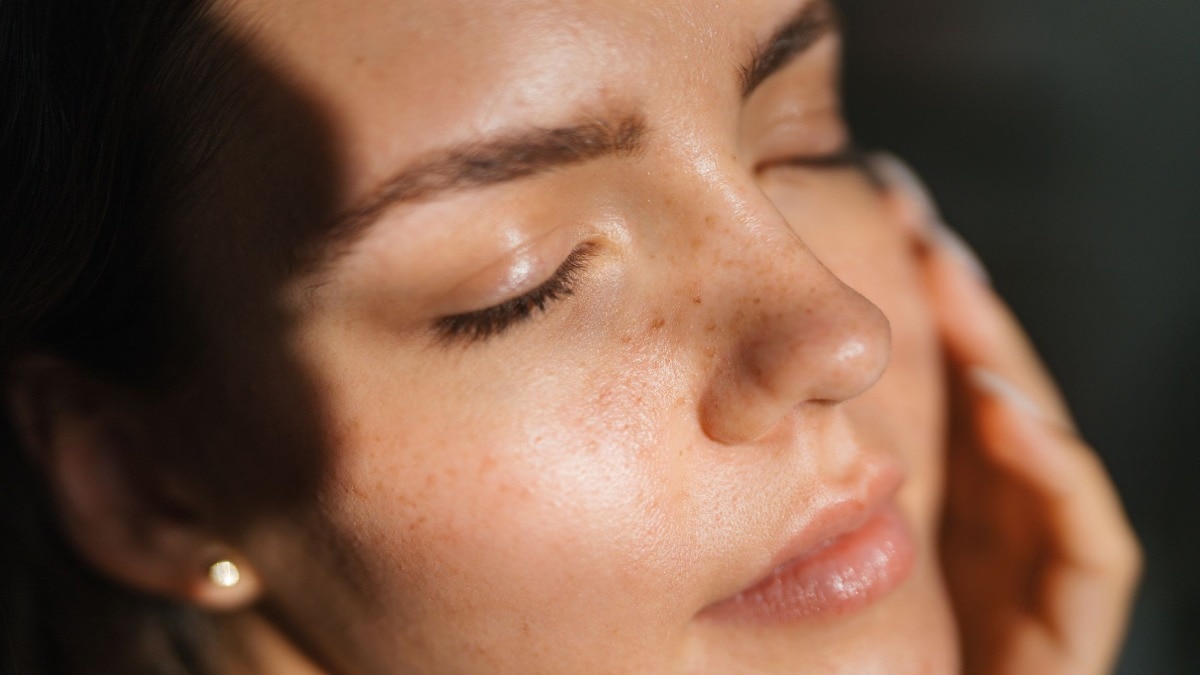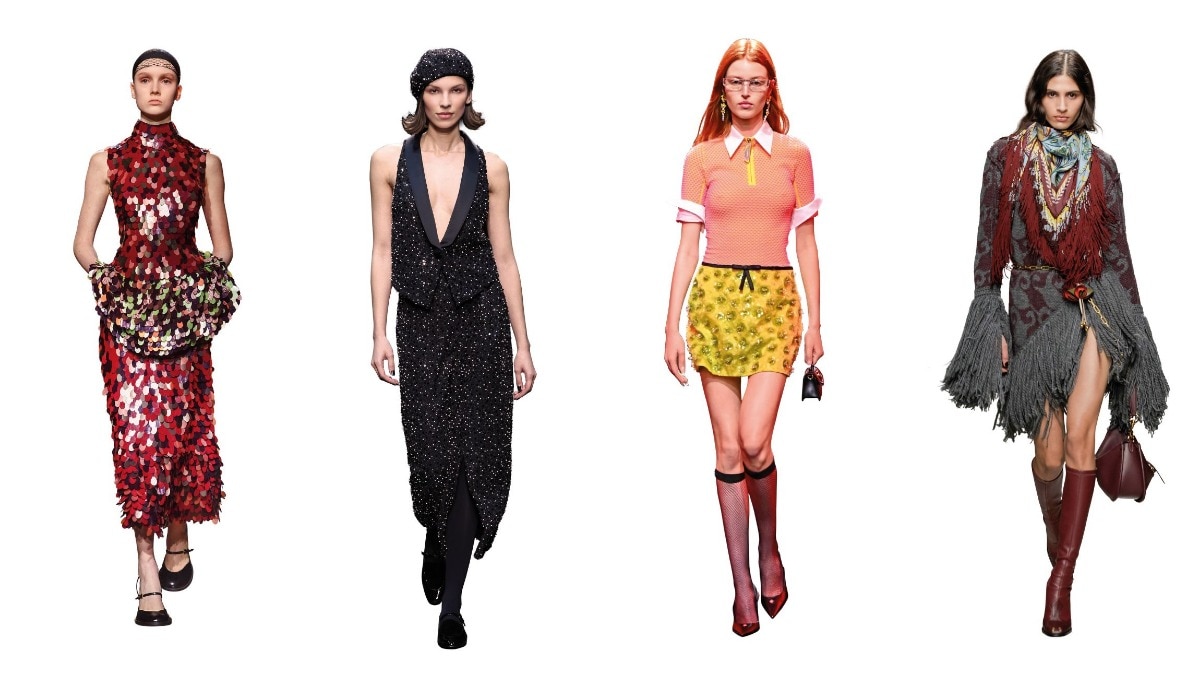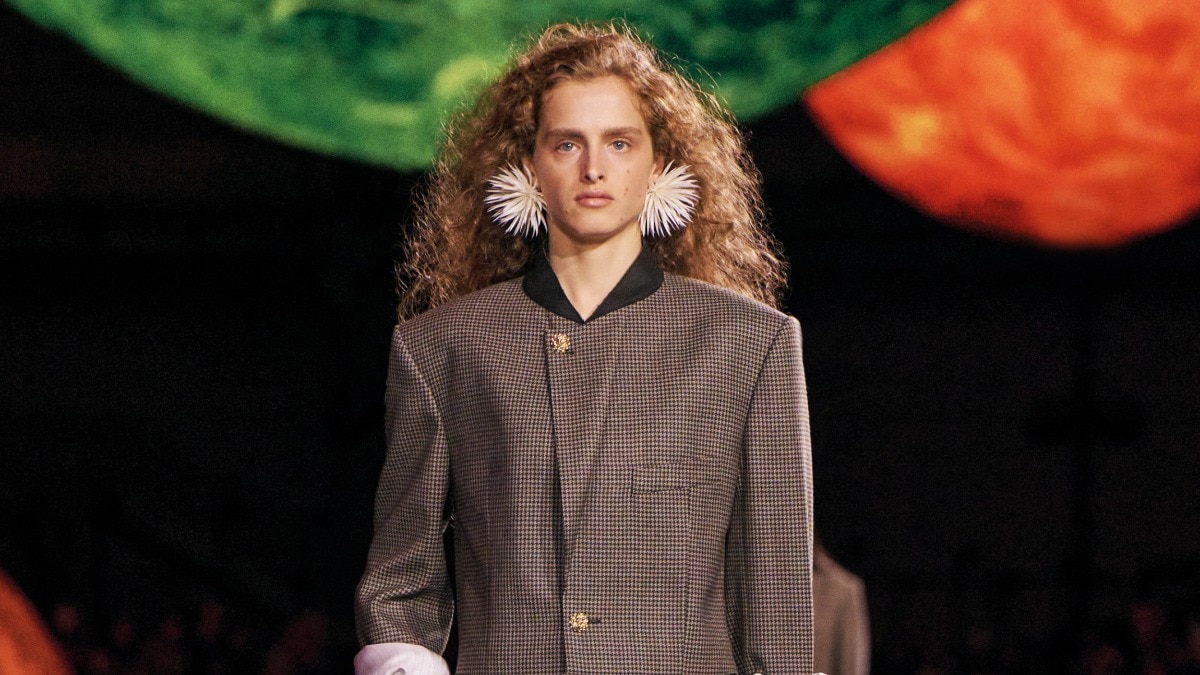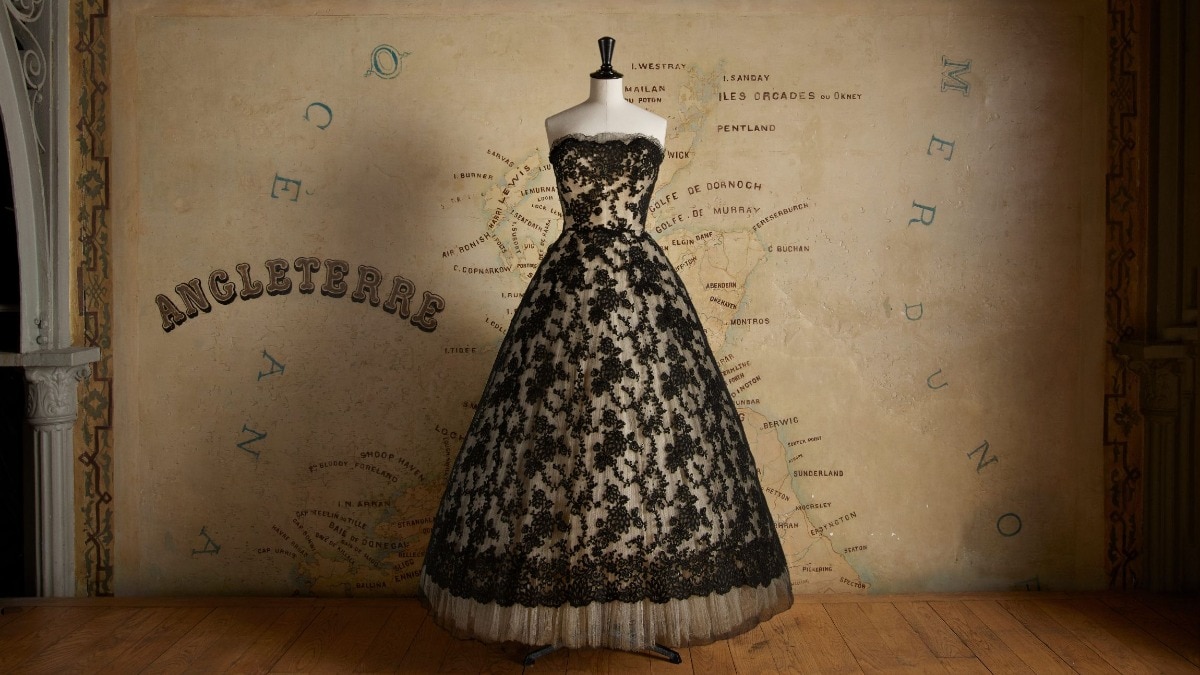
Princess Gauravi Kumari lets us into her real world, talks about PDKF’s empowering legacy, and shares her vision for Jaipur
In an exclusive interview with Bazaar India, cover girl Princess Gauravi Kumari gives us a sneak peek into her life and work.


I vividly recall the first time I spoke with Gauravi Kumari over a year ago, stumbling upon the Princess Diya Kumari Foundation (PDKF) brand on Instagram. Who would have thought we’d both end up here, with her gracing the cover of the magazine I now edit?
My first impression of Gauravi wasn’t that of a princess, but of a girl who was way more evolved than just the title she was born into. “I come from a household of enigmatic women—from Maharani Gayatri Devi to my grandmother Rajmata Padmini Devi of Jaipur to my mother Princess Diya Kumari, who currently serves as the deputy chief minister of Rajasthan,” Gauravi reflects.

Raised amidst tradition, yet influenced by the currents of change, Gauravi epitomises a new generation of royals, seamlessly blending heritage with contemporary values. For instance, she and her brother HH Maharaja Sawai Padmanabh Singh, fondly called Pacho, approach the traditional ceremonies with a renewed perspective—as choices rather than obligations. “We willingly embrace our cultural heritage and traditions,” she emphasises, underscoring their commitment to preserving and promoting their rich legacy. Gauravi’s formative years were spent in a boarding school, a journey that served as a springboard for carving a distinct path in the world. “I was just 11 when I went there. It was a space where anonymity prevailed, where nobody knew my background,” she reminisces. In the tapestry of tradition and modernity, Gauravi emerges as a luminary, embodying the timeless essence of royalty. Through her journey, she reaffirms the role of royalty—not merely as a title, but as stewards of heritage and agents of change in an ever-evolving world. Beyond her title, she sees herself as a torchbearer of cultural traditions, embodying individualism and authenticity that transcend royal lineage.

Navigating the delicate balance between autonomy and responsibility is an ongoing process for Gauravi. “While I take pride in my autonomy, I also recognise the privilege and responsibility that comes with my lineage,” she affirms. This dual awareness informs her advocacy for causes like the PDKF and women’s empowerment. Gauravi reflects on the purpose behind Jaipur’s foundation by Jai Singh II, and its subsequent rulers like Ram Singh and Man Singh II. Their vision was to establish Jaipur as a cultural nucleus, attracting artists, musicians, and artisans from far and wide. Today, Gauravi and her brother strive to revive Jaipur’s original essence by infusing it with contemporary relevance. “Looking ahead, we envision a future where Jaipur’s traditions resonate on a global scale,” Gauravi asserts.
With Jaipur emerging as a destination for cultural luminaries and creative minds worldwide, Gauravi and her brother eagerly contribute to its burgeoning artistic landscape, inspired by the enduring spirit of hospitality that defines Rajasthan and its capital.

Transitioning to a discussion about her schooling and her connection to PDKF, Gauravi says, “PDKF was initiated by my mother when she was the MLA from Sawai Madhopur. She aimed to empower the women of our region, eventually expanding the same vision across Rajasthan. Skill-building became our primary focus, as many women were eager to learn and explore new opportunities. During this time, I was studying at Mayo College in Ajmer. Upon completing my graduation, I pursued my dream of studying in New York at NYU.” Gauravi reflects on her transformative experience in New York, where she studied media and communication at the Gallatin School of Individualized Study. “Moving to New York was both exhilarating and challenging. While it wasn’t a complete cultural shock due to my family’s travels, being far from home required adjustment. Yet, I quickly made friends and found my footing, attributing much of my confidence to my time in boarding school and New York.”

The pandemic brought her home. “During that time, I delved into fashion business, igniting my passion for the industry. My internship before the pandemic at Paper magazine exposed me to various facets of the fashion world, from shoots to styling, marking the beginning of my journey into fashion,” she concludes, her voice resonating with a sense of passion and purpose.
As I inquire about the genesis of the label and its connection to the foundation, Gauravi reflects, “Upon my return home, I observed the foundation’s continued operation amidst the standstill. Despite their skill, I felt there was a disconnect: their work lacked visibility beyond a few visitors to our tiny palace stall. Claire, a fashion-savvy friend from Paris, shared my sentiments during our discussions.” Gauravi recalls that her collaboration with Claire stemmed from a desire to enhance the foundation’s reach and impact. “Rather than starting with the intention of creating a clothing label, our focus was initially on empowering the foundation’s artisans. It wasn’t about establishing a fashion brand per se; it was about supporting and empowering these artisans. We provided a platform and facilitated sustainable livelihoods for hundreds of women, transforming their output from sporadic sales to consistent demand.”
When asked about her involvement in the design aspect versus business and marketing, Gauravi explains, “It’s a bit of both. Everything you see in our store reflects our personal tastes—Claire’s and mine. When brainstorming for our next collection, we filter our ideas based on what we would wear ourselves. If it doesn’t resonate with us, it doesn’t make the cut. Our approach is deeply personal, reflecting our individual styles.”

Gauravi says versatility is something they consciously aim for. “Initially, our designs mirrored our own preferences, but we soon realised the importance of catering to a diverse audience. In Jaipur, block printed clothing predominantly leans towards traditional Indian wear. We identified a gap in the market for modern silhouettes infused with traditional craftsmanship. Our goal was to create clothing suitable for a 12-year-old as well as a 40-year-old. After two years, I’m proud to say that our collection resonates across age groups, reflecting the inclusivity we envisioned for our brand. This versatility brings me immense satisfaction as a designer.”
As we explore Gauravi’s personal style, it’s evident that she and the sari have developed a beautiful bond. She wears the sari in a manner that’s uniquely hers, defying traditional norms yet exuding authenticity. Gauravi reminisces about how she embraced the sari from when she was all of 13, inspired by the effortless grace of her mother, grandmother, and even Maharani Gayatri Devi. Their ability to command attention while draped in a sari left an indelible mark on her, instilling a sense of confidence and empowerment.
Recalling her memorable appearance at the Dior show, Gauravi shares how the sari has become her signature choice—a garment that embodies confidence and ease. Unlike second-guessing herself with other attire, the sari feels like a natural extension of her identity, deeply rooted in her family’s tradition. Learning to drape a sari herself was a proud accomplishment, she shares. What makes the sari even more special for Gauravi is its inheritance within her family. Saris, passed down from one generation to the next, hold stories and memories, embodying the beauty of continuity and tradition. Her personal style, she describes, is a blend of classic elegance and evolving risk-taking.

Our conversation organically steered to a lighter note and I asked her a few questions to know the “real” Gauravi.
One myth about being royal she would like to dispel: “People think I wake up wearing a tiara or in full princess attire, but there’s no such thing. I usually wake up in normal attire, like block-printed pajamas,” she laughs.
Three words to describe herself: “I would say I am loyal, I am shy, and evolving—constantly growing.”
Most princess-like moment: “One would be when I performed the Gangaur Puja in my mother’s old poshaak (clothes) and grandmother’s jewellery. Another would be attending a ball in Paris, straight out of a fairy-tale book.”
Normal day in the life of Princess Gauravi: “I start my day with coffee, hit the gym, split my time between the palace and PDKF, ensuring I spend time with the ladies at the foundation daily. Then, it’s family time and some reading or TV.”
Guilty pleasure: “Eating too much dessert. My mom and I bond over desserts. We could devour ten cakes in a day,” she chuckles.
Favourite art piece: “Art is a significant source of inspiration for me, so selecting just one favourite artwork is challenging. However, I’d like to highlight my favourite artist, Maharaja Sawai Ram Singh II of Jaipur. His images of Jaipur’s royal women are ground-breaking, both in terms of photographic skill and subject matter, as they were captured during a time when women observed strict purdah.”

Image caption: Gauravi is wearing a silk-satin sari with halter blouse, Sabyasachi; Hindu Necklace in platinum, white-gold with sapphire beads, emerald cabochons, and diamonds, and Dome ring in gold, with fluted jade and turquoise, both Cartier Collection
Going back to our discussion on PDKF and its commitment to sustainability, I asked Gauravi to elaborate on how they ensure minimal waste in their processes. “When we started, the concept of sustainability was paramount, and we embarked on a journey to understand its essence. While we’re not yet 100 per cent sustainable, we’re actively progressing towards that goal. One innovative approach we’ve adopted is utilising all our scrap fabric to create patchwork fabric, which has become a signature collection. Sustainability, for us, also extends to preserving the livelihoods of the women we empower. They are the heart and soul of our brand, embodying its essence,” she shares.
Reflecting on her experience of working closely with these women, Gauravi says, “There are three fundamental lessons I’ve gleaned from them. Witnessing their resilience and transformation from diverse backgrounds instills a sense of fearlessness in me. They’ve taught me the value of remaining grounded and humble amidst success. Lastly, their unwavering belief in us has been a profound source of inspiration. They’ve empowered us to realise our potential and transform a small-scale project into a meaningful brand.”
She emphasised that the women were at the forefront of the brand. “For me, the greatest encouragement comes when someone recognises me for the PDKF brand rather than just myself. It’s a testament to the brand’s growing reach and impact beyond Rajasthan. We’ve strived to maintain transparency since our inception, with our initial Instagram posts featuring the artisans.”

Image caption: Gauravi is wearing the Achlys Corset and the Agnes Skirt, both Sameer Madan; bracelet in platinum with round old-cut and diamonds, and Plaque de Cou in platinum, pink gold with round old and single cut diamonds, both Cartier Collection
I then inquired about the valuable advice Gauravi has received from the strong women in her family that she carries with her. “Firstly, my mother embodies the art of balance—juggling multiple responsibilities while maintaining her composure. Secondly, the importance of disregarding others’ opinions. I’ve learned not to dwell on what people might say, a lesson imparted by my grandmother and mother. It’s liberating to prioritise personal happiness over external judgments.”
Talking about the digital journey, Gauravi says the brand’s launch on Instagram has been immensely rewarding, even shaping its identity. “However, navigating the ever-evolving world of social media presents challenges. Keeping up with new features and content creation methods can be daunting,” she adds. Authenticity remains the guiding principle, says the princess with pride. “We strive to create genuine, relatable content that resonates with our audience.”
Prompting her on future plans for PDKF, Gauravi shares, “Expanding our reach beyond Rajasthan is a priority. We aim to establish more centres and stores across the country, revitalising Rajasthan’s traditional crafts.” Asked about any industry or technique she would like to revive in particular, Gauravi answers in the positive. “I think tie and dye, specifically leheriya, holds deep traditional roots in Rajasthan. I have grown up seeing my mother adorn leheriya saris, particularly during significant events. She opts for bright pinks or hot pinks, or beautiful blues based on the season or festival. It’s a narrative I want to share with the world because it’s more than just a beautiful sari—it carries profound cultural significance.”
To conclude, I ask about advice for young girls. Gauravi emphasises, “Staying grounded, true to oneself, and authentic have guided my journey. Don’t worry about others’ opinions, stress less, stay hopeful, and pursue your dreams relentlessly.”
Credits
Editor and interview: Rasna Bhasin (@rasnabhasin)
Digital Editor: Sonal Ved (@sonalved)
Stylist: Anaita Shroff Adajania (@anaitashroffadajania)
Photographer: Signe Vilstrup (@signe_vilstrup)
Hair and Makeup Artist: Anne Staunsager (@annestaunsager)
Cover Design: Mandeep Singh (@mandy_khokhar19)
Assistant Photographer: Nadia Back
Assistant Stylist: Arabela Buljevic
Editorial Coordinator: Shalini Kanojia (@shalinikanojia)
Production: Super Production
Location courtesy: The Woodward Hotel, Geneva (@thewoodwardgeneva)










